View the exhibit, which contains the partial output of an IKE real-time debug, and then answer the question below.
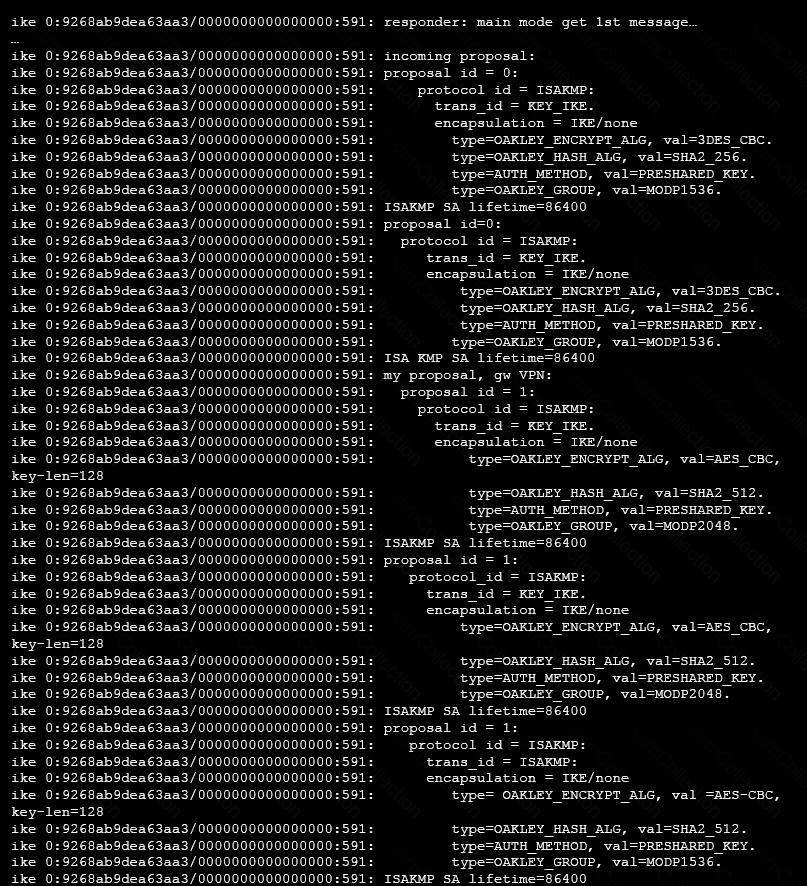
The administrator does not have access to the remote gateway. Based on the debug output, what configuration changes can the administrator make to the local gateway to resolve the phase 1 negotiation error?
View the exhibit, which contains the partial output of an IKE real-time debug, and then answer the question below.
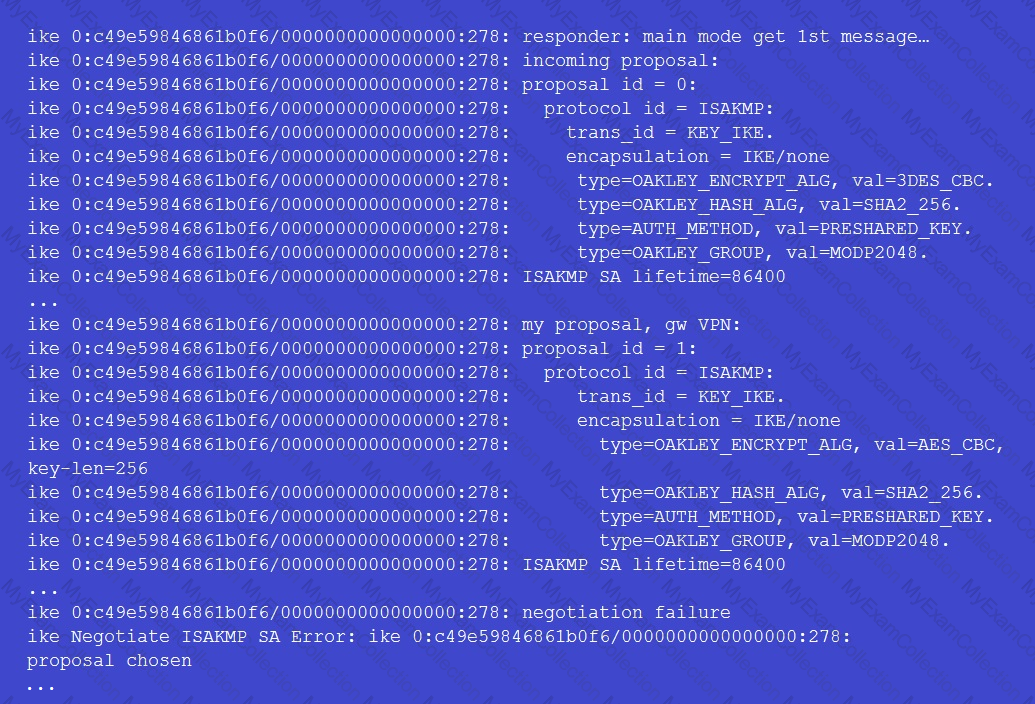
Why didn’t the tunnel come up?
Refer to the exhibit, which shows the output of a diagnose command.
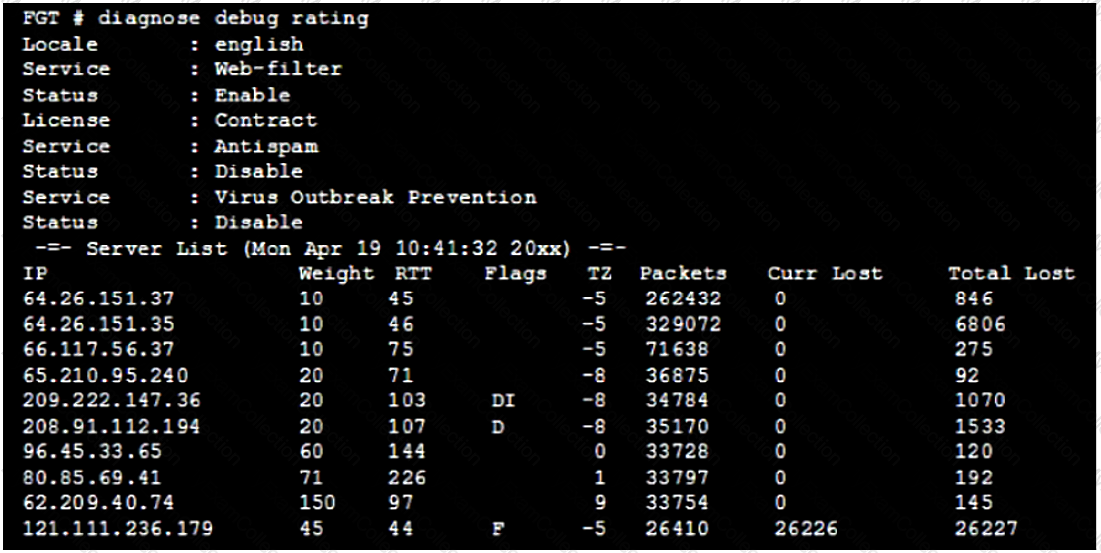
What can be concluded about the debug output in this scenario?
In which two ways does FortiManager function when it is deployed as a local FDS? (Choose two.)
Refer to the exhibits.
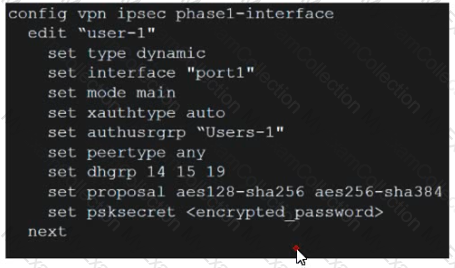
Which contain the partial configurations of two VPNs on FortiGate.
An administrator has configured two VPNs for two different user groups. Users who are in the Users-2 group are not able to connect to the VPN. After running a diagnostics command, the administrator discovered that FortiGate is not matching the user-2 VPN for members of the Users-2 group.
Which two changes must administrator make to fix the issue? (Choose two.)
Refer to the exhibit, which shows a session table entry.
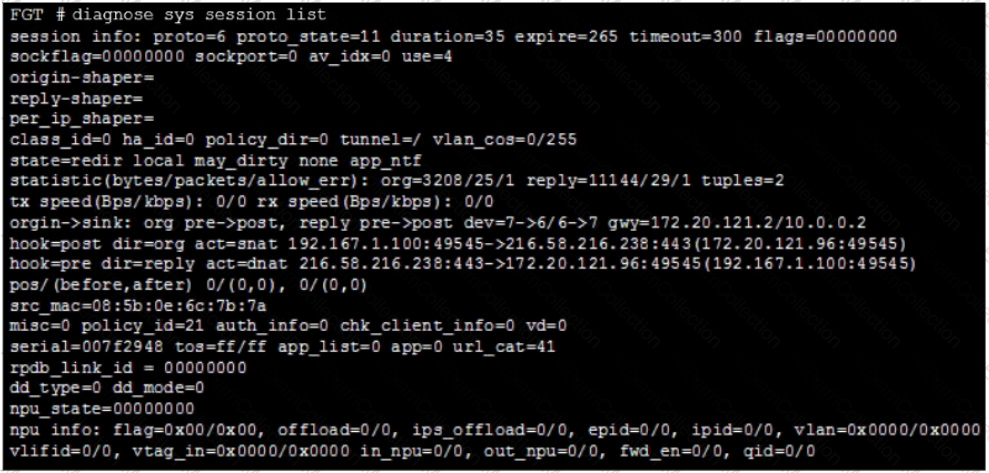
Which statement about FortiGate behavior relating to this session is true?
A FortiGate device has the following LDAP configuration:
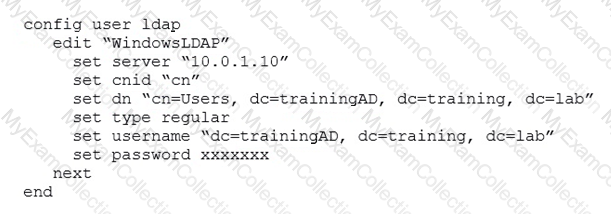
The administrator executed the ‘dsquery’ command in the Windows LDAp server 10.0.1.10, and got the following output:
>dsquery user –samid administrator
“CN=Administrator, CN=Users, DC=trainingAD, DC=training, DC=labâ€
Based on the output, what FortiGate LDAP setting is configured incorrectly?
Examine the output from the 'diagnose debug authd fsso list' command; then answer the question below.
# diagnose debug authd fsso list —FSSO logons-IP: 192.168.3.1 User: STUDENT Groups: TRAININGAD/USERS Workstation: INTERNAL2. TRAINING. LAB The IP address 192.168.3.1 is NOT the one used by the workstation INTERNAL2. TRAINING. LAB.
What should the administrator check?
Refer to the exhibit, which shows a partial routing table.
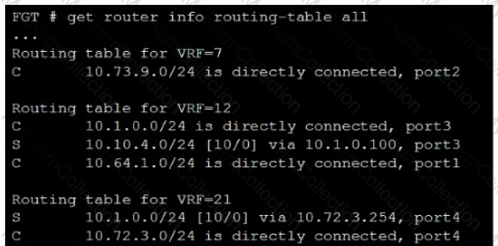
Assuming all the appropriate firewall policies are configured, which two pings will FortiGate route? (Choose two.)
An LDAP user cannot authenticate against a FortiGate device. Examine the real time debug output shown in the exhibit when the user attempted the authentication; then answer the question below.
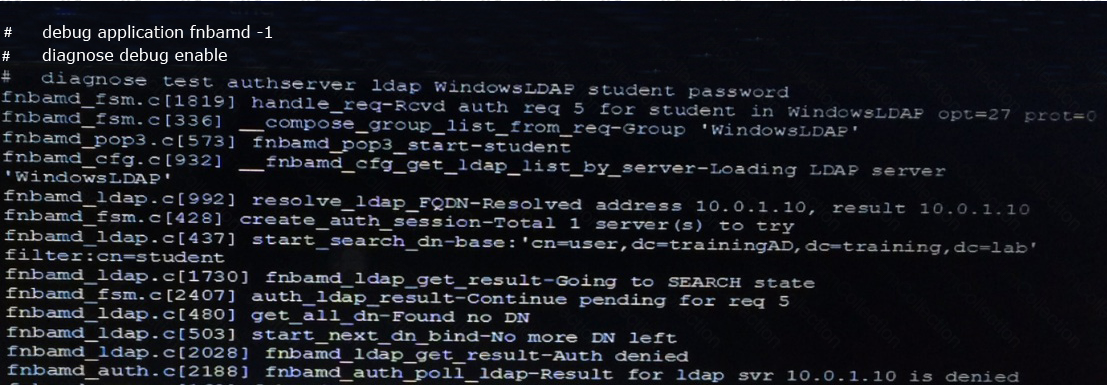

Based on the output in the exhibit, what can cause this authentication problem?
What does the dirty flag mean in a FortiGate session configured for NGFW policy mode?
Examine the following traffic log; then answer the question below.
date-20xx-02-01 time=19:52:01 devname=master device_id="xxxxxxx" log_id=0100020007 type=event subtype=system pri critical vd=root service=kemel status=failure msg="NAT port is exhausted."
What does the log mean?
Which two configuration settings change the behavior for content-inspected traffic while FortiGate is in conserve mode? (Choose two.)
Which two configuration commands change the default behavior for content-inspected traffic while FortiGate is in conserve mode? (Choose two.)
View the exhibit, which contains the output of diagnose sys session stat, and then answer the question below.
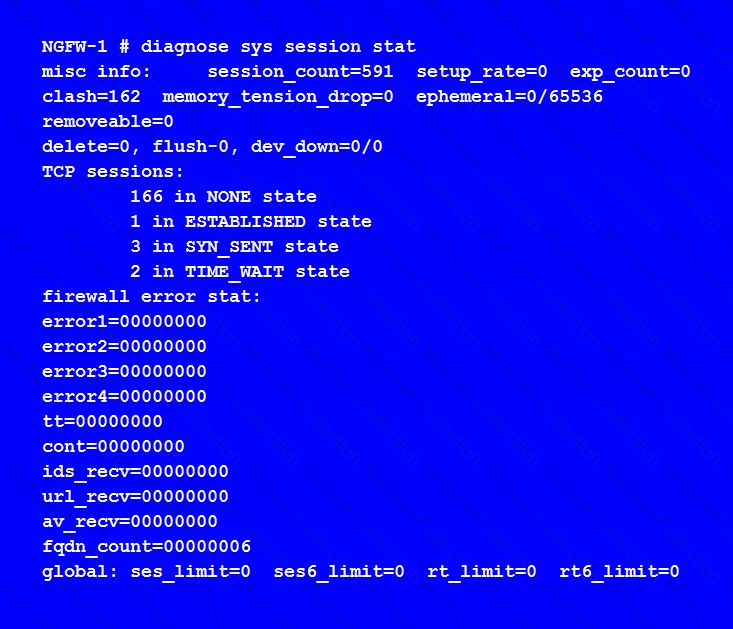
Which statements are correct regarding the output shown? (Choose two.)
Examine the output of the ‘get router info ospf neighbor’ command shown in the exhibit; then answer the question below.

Which statements are true regarding the output in the exhibit? (Choose two.)
Refer to the exhibit, which shows the output of a debug command.
Which statement about the output is true?
Which configuration can be used to reduce the number of BGP sessions in an IBGP network?
Refer to the exhibit, which contains a TCL script configuration on FortiManager.
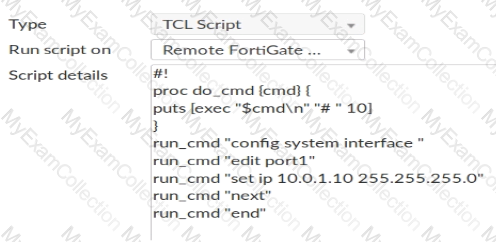
An administrator has configured the TCL script on FortiManager, but failed to apply any changes to the managed device after being executed.
Why did the TCL script fail to make any changes to the managed device?
Refer to exhibit, which contains the output of a BGP debug command.
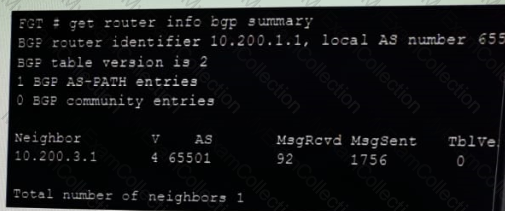
Which statement explains why the state of the 10.200.3.1 peer is Connect?

